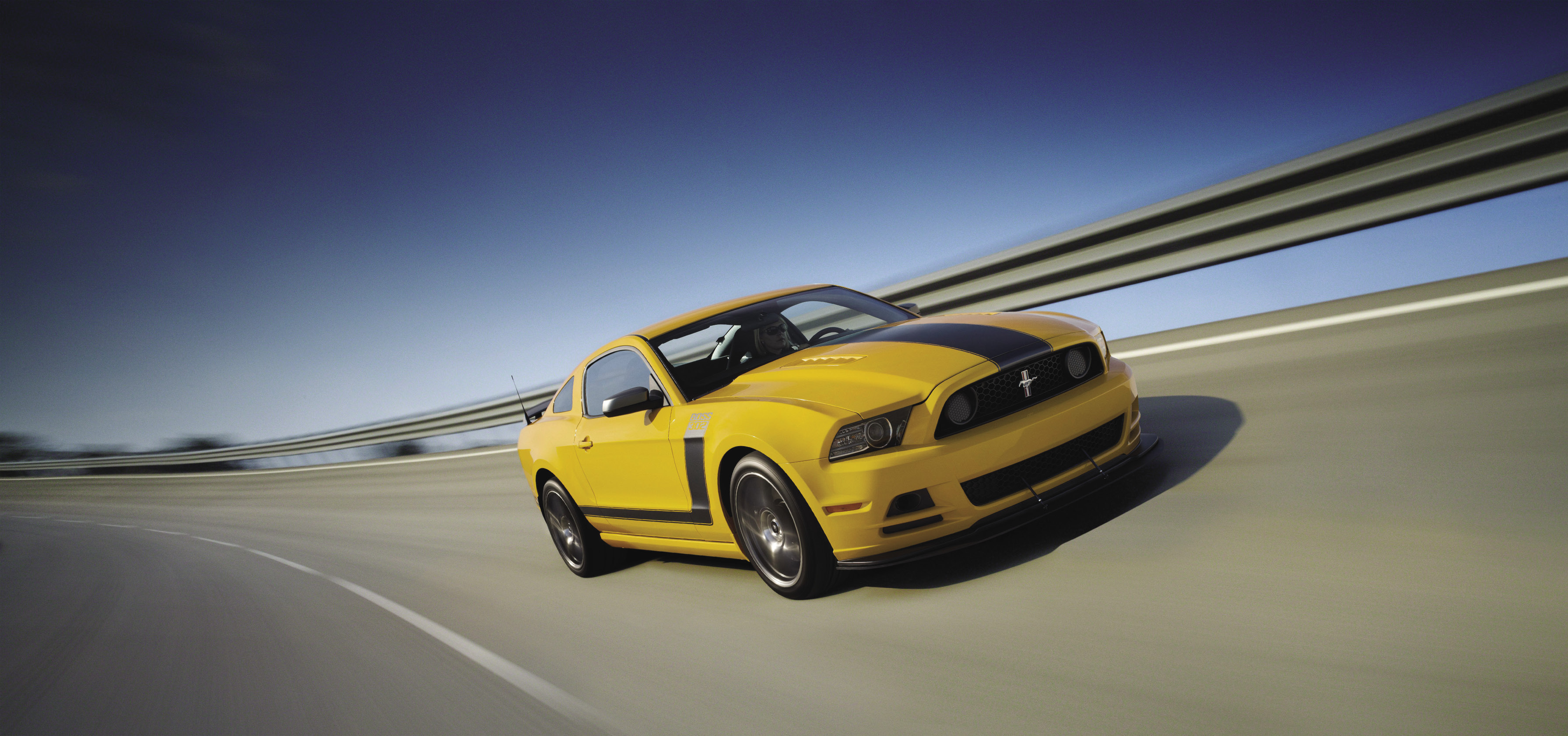
Fords focused on performance
I’m in Ottawa to participate in Ford of Canada’s 2013 Performance Vehicles Program. There isn’t just one new high-performance model here, but several including the Mustang V6 and GT (both in coupe and convertible form) plus the track-happy Boss 302 and powerhouse Shelby GT500. The 2013 Focus ST is in attendance, too. And, since it’s been years since Ford has had a Focus I’d want to drive, when finally given the chance to have at it in the forthcoming all-new high-performance ST model, I’m all over it like white on white rice.
2013 Focus ST
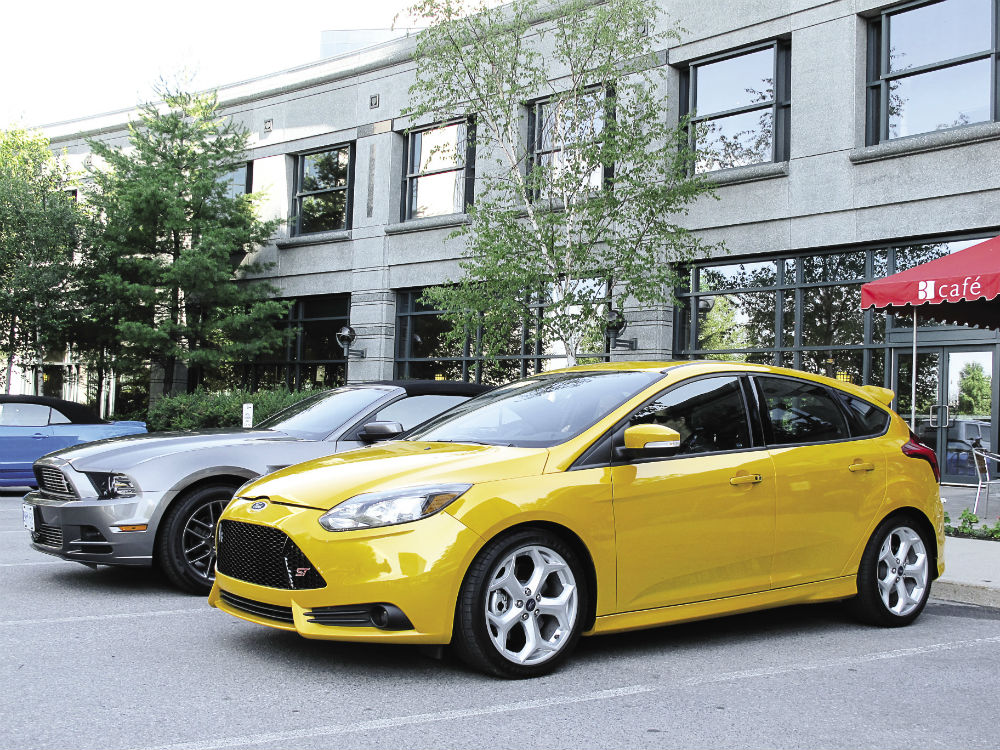
Following breakfast and Ford’s marketing presentation at the Brookstreet Hotel, I scramble out to the parking lot to snap up the keys to one of two pre-production Focus STs on hand for the drive out to Calabogie Motorsports Park situated an hour-and-a-half to the west. One by one, the others in this group make their way over to the cars and show their distaste upon learning the first crack at driving the ST has gone to someone else. C’est la vie, right? Based on previous Focus ST (or Sport Technologies) models in Europe and engineered by the Global Performance Vehicle Group – a partnership between Europe’s Team RS and North America’s Special Vehicle Team (SVT) – the new 2013 Focus ST is the first truly global performance car from Ford.
It will be available in 40 different markets around the world, including Canada, when it goes on sale later this summer.Ford has even released pricing – MSRP is $29,999 CAD – and announced a $1,000 technology package and the stunning optional ($300) Tangerine Scream tri-coat paint that, well, screams look at me!
Powered by a specially-tuned two-litre EcoBoost engine that makes 252 hp and 270 lb-ft of torque, the North American models can reach 96.6 km/h (60 mph) in 6.5 seconds. Not Earthshattering by any means, but quick nonetheless and the quickest Focus ever offered this side of the pond. And, that’s not all. The ST engine comes with an “overboost” feature that allows the turbocharger to produce more boost for up to 15 seconds at a time for an extra burst of acceleration when the throttle is wide open. The result is up to 7.4% more output in the sweet spot of the powerband from 3,000 to 4,500 rpm. It’s similar to IndyCar’s Push-to-Pass feature, which the series reintroduced a new version of in Toronto this season, and is useful for overtaking maneuvers.
The roads leading to the track are twisty and chock full of major elevation changes – quite bumpy and technical in places. It’s hot and dry out and the ST is loving every minute of its intercourse with the roasting tarmac ribbon. The redesigned intake and tuned exhaust sounds are fueling my desires to push this car hard, but I’m heading to the track to test out a bevy of Ford Mustangs, so I opt not to break any road rules.
The variable-ratio Ford sport steering works well – it’s light when traveling in a straight line and at slow speeds, but stiffens up for more precise fingertip feedback when pushing it in corners. White rice this is not!
The ST team has done a great job on the sport suspension and the chassis is responsive and well-balanced to give drivers outstanding feedback and control. Three-mode electronic stability controls and enhanced torque vectoring control technologies allow skilled drivers to get maximum performance from the car when at the track. Speaking of which, we’ve just arrived.
2013 Mustang V6
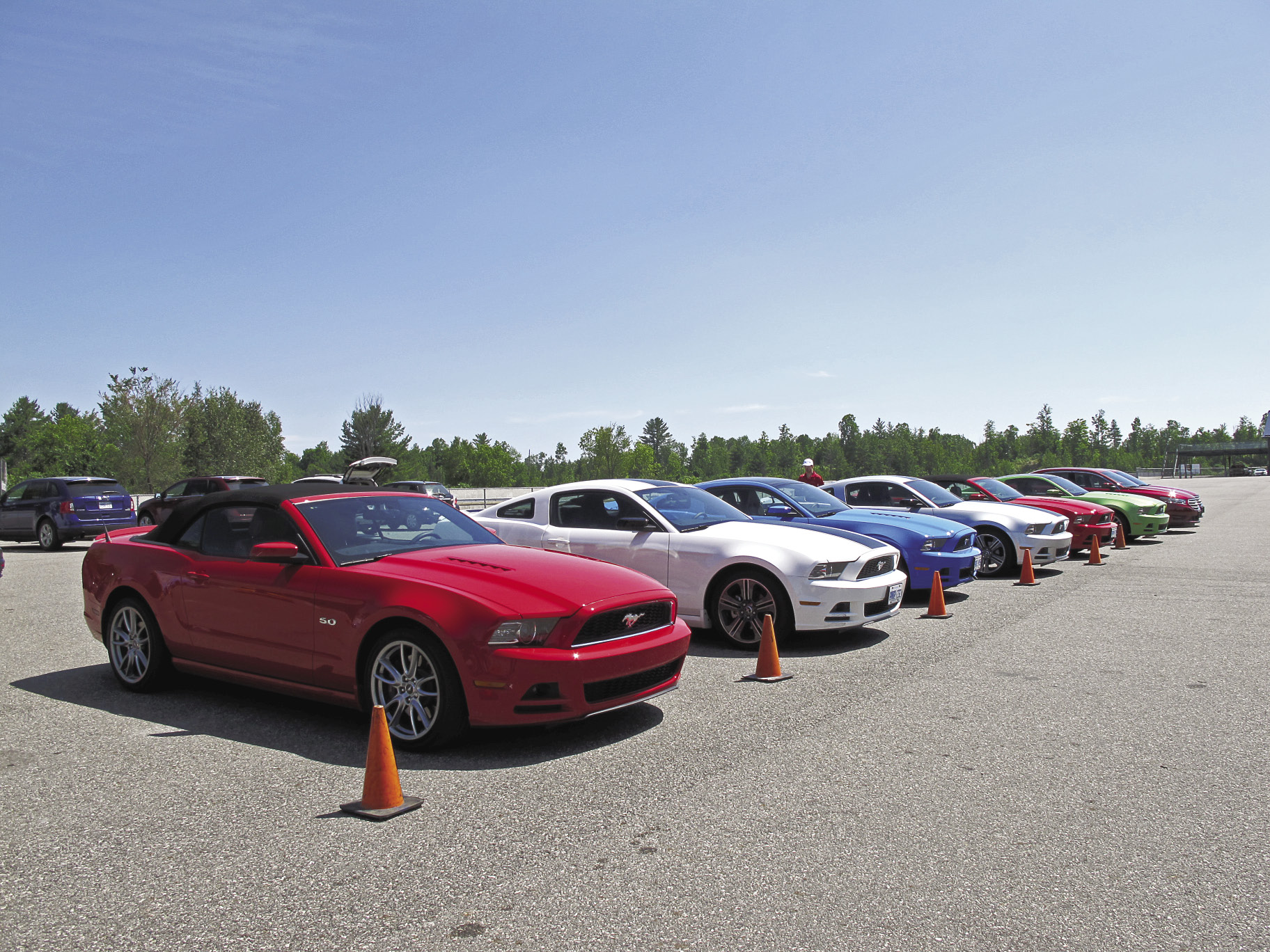
Ford has made improvements to the new Mustang every year since its 2010 release. Visually, this version gets a new hood, more wheel choices and better performance.
A 305-hp 3.7-litre Ti-VCT V6 engine puts out 280 lb-ft at 4,250 rpm through a six-speed manual transmission and limited-slip differential with 2.73:1 gear ratio (all standard on the base Mustang coupe) for $23,999 CAD. This also gets you a number of new driving technologies from HID headlights to a new 4.2-inch LCD screen that lets users access fuel economy and vehicle performance. To get the optional Performance Pack this car is equipped with, however, you’ll need to step up to the premium coupe for three grand more (plus $1,400 if you are going the six-speed automatic route). This adds the Mustang GT coupe suspension with beefier sway bars, front strut tower brace, 19-inch aluminum wheels and 255/40 R19 Z-rated summer performance tires. Standard power-assisted electric steering and available cloth Recaro seats with integrated head restraints, ample room for helmets and pass-through slots for multi-point harnesses for the V6 and GT models ensure driving enthusiasts’ expectations are met.
A glass roof is an option. There’s also the convertible model, but it’s more expensive – as in Mustang five grand more.
2013 Mustang GT
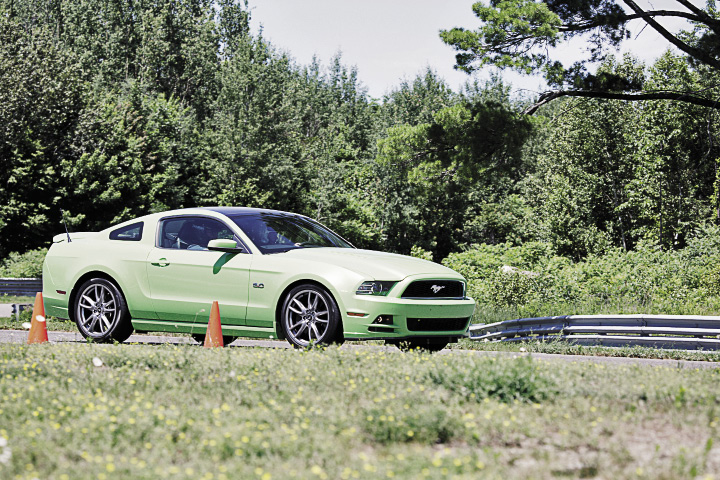
The GT coupe ($39,299) and convertible ($44,299) both get more technology options on top of Ford’s latest five-litre V8, which makes 412 hp and 392 lb-ft at 4,250 rpm.
The optional transmission changes gears smoothly and can be operated in automatic or manual shift mode – the 5.0 is capable of propelling the GT to speeds in excess of 200 km/h at the end of the 2,000-foot-long straightaway on Calabogie’s 5.05-km long race track – and the engine growls at a noticeably lower pitch compared to the V6.
New customer option packages for the GT and V6 offer SYNC with steering wheel controls, a leather steering wheel and shifter, six-way power driver’s seat, fog lamps, auto dimming mirror and more – including the GT Brembo Brake Racing Package.
Available only on manual GT Mustangs with a 3.73 axle, the optional $2,200 Brembo package gives track enthusiasts an upgraded engine cooler, 14-inch vented front discs with performance friction brake pads, unique 19-inch alloy wheels and summer performance tires as well as the same radiator and Torsen differential the Boss 302 is equipped with
The GT models come with what Ford calls Track Apps, which uses a five-way button on the steering wheel to keep tabs on cornering g-forces, acceleration times for various speeds and distances and stopping time and distance. There are automatic and countdown start features, data-logging capabilities and even a drag racing Christmas tree light to bring out the naughty in people.
2013 Mustang Boss 302
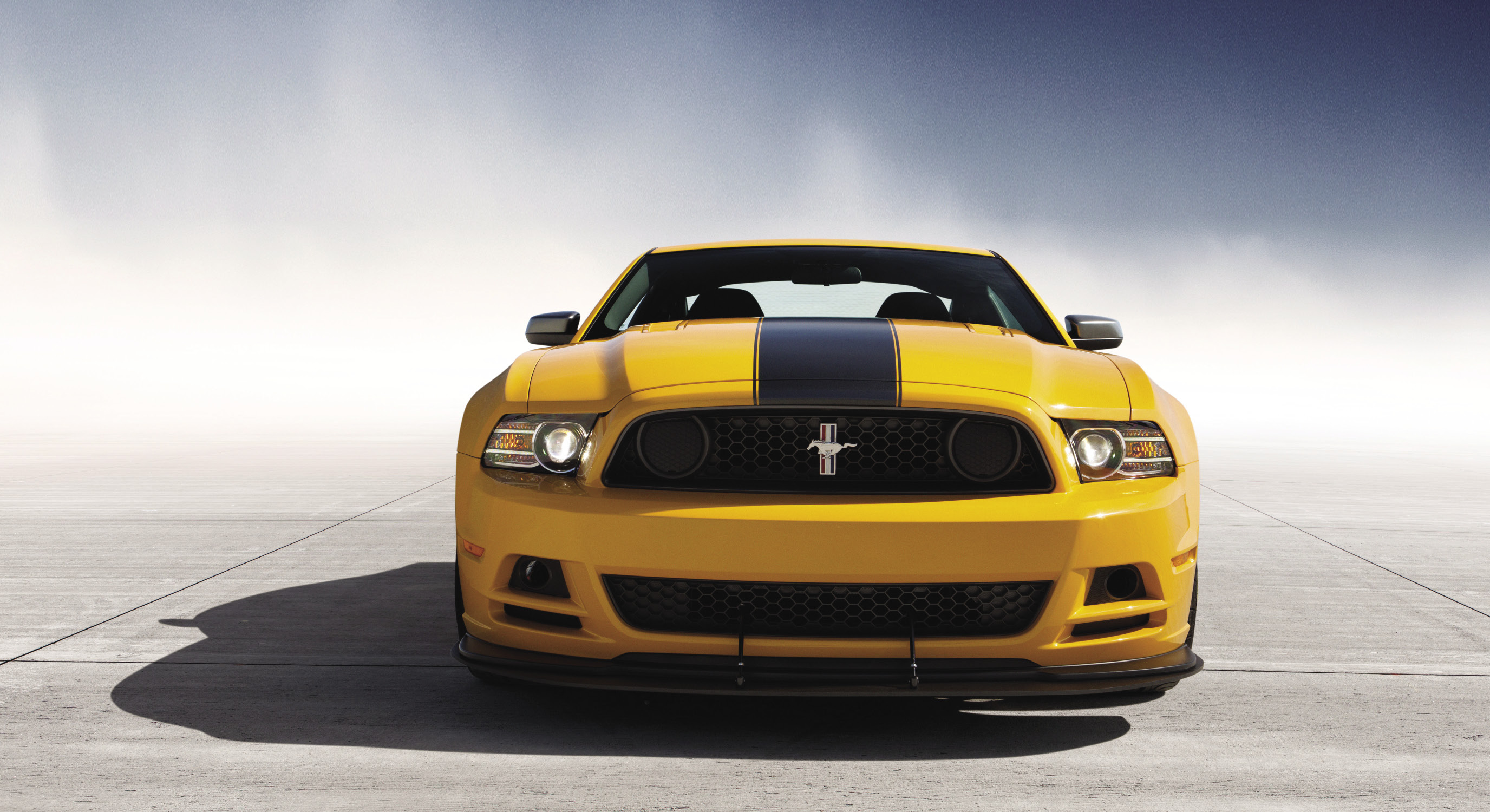
I was lucky enough to score this bad boy for a 36-hour test drive last summer and, oh boy, was it impressive!
I took it out for a long, long drive in the country on some of my favourite roads and thoroughly enjoyed a beautiful day driving out to visit my friend Kevin’s horses Ms. Fantasy and Mikey the Hackney Pony, who both enjoyed the visit from their mechanical cousin. But, this is a real performance car with capabilities that can only be fully appreciated when driven in its element on a track.
The 2013 Boss 302 boasts only a few changes over last year’s model, including new paint options and design details in the form of a reflective hockey stick graphics package to help further the heritage of the original 1970 Boss 302 on this modern Boss coupe.
Ford SYNC connectivity is now a standard Boss feature for 2013 and; for $48,799, this coupe-only model gets a 444-hp version of the five-litre DOHC V8 engine paired with a close-ratio short-throw six-speed manual transmission, carbon fibre-plate clutch and limited-slip 3.73 ratio rear axle.
A quad-pipe exhaust system with noise-attenuated side outlets, 14-inch vented front rotors with Brembo four-piston calipers, upgraded brake lines and pads, larger-diameter rear stabilizer bar, stiffer springs and suspension bushings at all four corners plus manually-adjustable shocks and struts are standard on the Boss 302.
Lightweight 19-inch charcoal gray alloy racing wheels with Pirelli P Zero summer tires complement the aggressive front splitter and unique rear spoiler to optimize weight, aerodynamics and track performance. A Torsen differential is available.
The Boss 302 is excellent on the track with great power-to-weight. It weighs 1,649 kg (3,631 lb) versus the GT500 coupe, which tips the scales at 1,744 kg (3,845 lb). The convertible is heavier still at 1,806 kg (3,982 lb) as are the Mustang GTs, though not as much. You can feel the weight difference on the track too – both in terms of acceleration and handling – as the 302 chassis tends to oversteer more mid-corner whereas the GT500 pushes instead. If you’re looking for a ‘Stang that looks great on the street and drives even better at the track, there’s nothing like the Boss 302. If it’s single racing duty you’re after, the Laguna Seca seems like a no-brainer.
2013 Mustang Shelby GT500
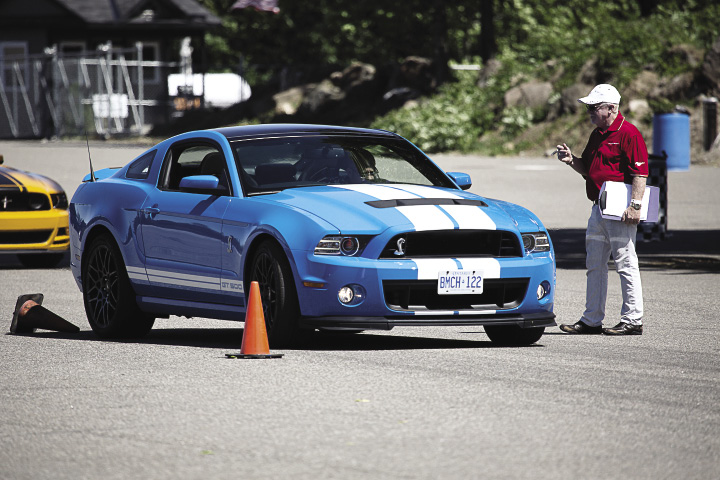
If you don’t think the 302 is enough Mustang for you, there’s always the Shelby GT500. Also available in hard and soft top versions, the former starts at $61,500 (again, plus $5,000 for the convertible) and you get basically the same supercharged V8 engine found in the Ford GT supercar, but with improvements, and the venerable Tremec six-speed manual transmission with revised gearing.
For starters, engine displacement is now 5.8 litres (compared to 5.4 on 2010-12 models) thanks to larger-bore pistons. There’s a bigger, more-efficient 2.3-litre supercharger that helps net 662 hp and 631 knee-wobbling torques and catapults the car from zero-to-96.6 km/h (60 mph) in 3.7 seconds – almost twice as fast as the Focus ST – en route to its 320 km/h top speed. The outgoing 5.4-litre V8 makes only 550 hp and 510 lb-ft by the way.
Virtually every part of the 2013 GT500 powertrain is optimized for the 20% increase in horsepower and 24% increase in torque vis a vis a new cross-drilled block and heads, updated camshaft profiles, a new carbon fibre driveshaft and upgraded clutch, transmission and axles. The entire cooling system has been overhauled with a larger cooling fan, fan shroud with high-speed pressure-relief doors, a more efficient intercooler, higher-flow intercooler pump and a 36% larger intercooler heat exchanger. Perhaps even more impressive is the fact the 2013 GT500 squeaks under the “gas guzzler tax” with fuel economy figures – 13.9 and 8.3 L/100 km in the city and highway, respectively – similar to that of a mid-size SUV.
A new Brembo system with six-piston front calipers plus larger front and rear rotors resists brake fade better while new pads offer more aggressive initial bite for the road or track. Also new for 2013 is an optional Performance Package featuring adjustable Bilstein dampers and a Torsen limited-slip differential to help the rear suspension better deliver maximum torque and traction and longer under track conditions. All vehicle configurations come with 19-inch front and 20-inch rear wheels coupled with Goodyear Eagle F1 SuperCar G:2 ultra high-performance tires.
A launch control feature with user-changeable RPM setting is included to help achieve those acceleration numbers; however, with the Track Apps’ launch RPM set to 3,500 rpm, I could only muster 4.3 seconds (in a half dozen or so attempts at the track) as proven by the data-logging capabilities. Once properly set and ready (with the GT500’s heavy clutch fully-depressed and mashing the gas pedal), the charged V8 revs up and holds at the preset RPM. Drop the clutch within five seconds and the Shelby hooks up and takes off like a bat out of hell, pulling the occupants into their seats.
Out on the racetrack, it hauls ass out of 90-degree corners and bombs down long straightaways with such ease. The Brembos do instill confidence at the end of those straights and the car is pretty good in the corners. It does tend to understeer, but that isn’t such a bad thing when you’re out on the track.
Conclusion
The GT500 may be the fastest, most-powerful Mustang to date, but it’s only marginally quicker than its stablemate the Boss 302, which is lighter, more responsive and better-balanced on the track. Of course, it even comes as a track-only version called the Laguna Seca Edition. Neither car comes cheap though. And, perhaps by the time you’ve built and priced one (or the other) out exactly the way you’d like on the Ford.ca site, you could probably put together two Focus STs for about the same price and have just as much fun.

























